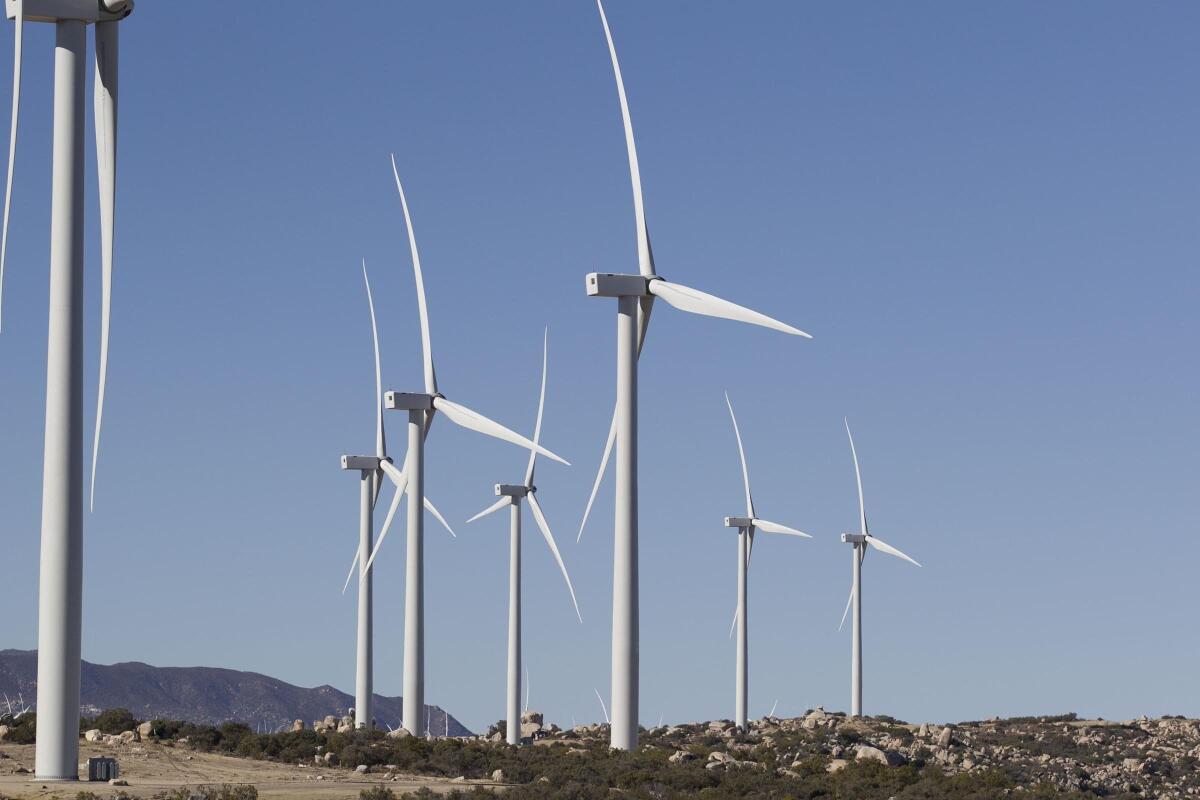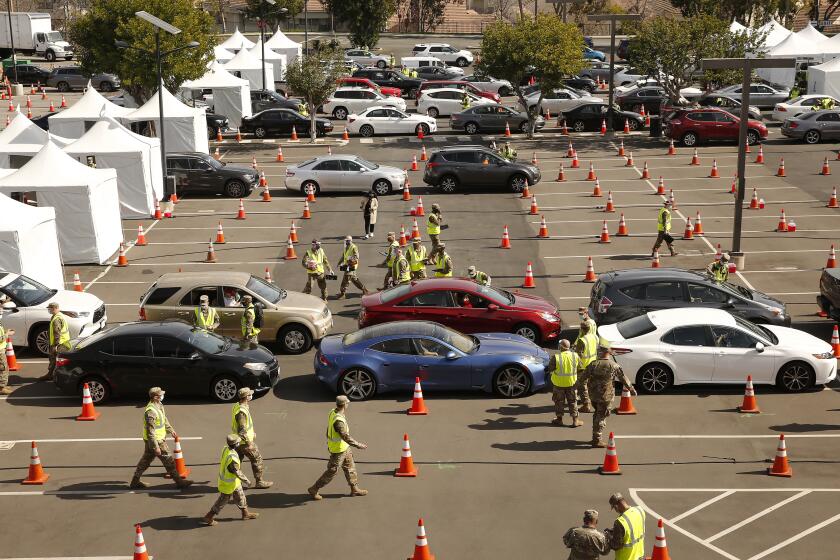Editorial: California needs offshore wind farms too

The Biden administration this week announced plans to speed up development of offshore wind farms to create 30 gigawatts of renewable energy by 2030 — enough to power more than 10 million homes — while investing $230 million in related port improvements and making $3 billion in loans available to the offshore wind-power industry.
It’s an ambitious plan which the administration framed partly as a means to create 44,000 renewable energy jobs. Yet the more important impact would be to help speed up our conversion from fossil fuels to renewables. To that end, good. But do more, faster.
It is inarguable that our generations-long reliance on burning fossil fuels for energy has pushed global temperatures up, with increasingly dangerous climate changes — more powerful storms, deeper droughts, stranger and more severe weather patterns steered by shifting jet streams and higher sea levels caused by melting glaciers.
Of course Manhattan Beach and Los Angeles County should return Bruce’s Beach to the family from which it was wrongly taken, or else pay for the land. This kind of acknowledgement and reparation necessarily raises all kinds of questions about thefts from others, including land from indigenous Californians and labor and dignity from Black Americans, but the controversy over those questions is no reason to slow redress for the historically recent racist taking of the Bruces’ land.
The longer it takes the world to shift away from burning fossil fuels, the worse the changes in climate and the ensuing impacts, including species extinctions, disrupted food chains and political instability of governments struggling to deal with economies that are evolving and populations that are migrating to more hospitable environs.
Three years ago Congress considered the SECURE American Energy Act, a Republican proposal aimed at expanding our reliance on fossil fuels while accelerating the sale of leases for wind farms off the California coast. We argued against that measure as a wish list for the oil industry (it died in the House) and because the provision about quick leases was a thinly veiled attempt to troll a Democratic state, not a carefully vetted and environmentally sound plan.
But Californians, already accustomed to the scattered oil rigs off the coast, must prepare themselves for the eventuality of offshore wind farms, even if some people might balk at the sight of giant, slowly spinning windmills rising from the sea. Like the rest of the country, we must intensify our efforts to slash greenhouse gas emissions to net-zero by 2050, which experts say is necessary to avoid the worst effects of global warming.
Biden’s initial focus is on sites off the East Coast, from Virginia to Massachusetts. The latter would be near the nation’s sole working oceanic wind farm, off the coast of Rhode Island, which generates 30 megawatts of power. The president’s plan also designates the New York Bight — between Long Island and New Jersey — as an offshore wind zone.
For its part, the California Energy Commission recognizes the potential for obtaining significant amounts of renewable energy from wind farms off our coast while still being mindful of environmental impacts (migratory birds and windmills tend to be a fraught mix) and shared use concerns (shipping lanes and commercial fishing, for example). With the federal Bureau of Ocean Energy Management, it has been assessing wind power potential up and down the coast and has focused on three areas off Humboldt, Diablo Canyon and Morro Bay, though it has run into trouble on the last two over Defense Department concerns about potential interference with its activities.
In a perfect and nonwarming world, it would be nice to not have windmills rising above the desert or out of the sea, but it is clear that they are a necessary part of our future energy mix if we are to get out of this environmental jam we’ve created for ourselves.
With another wave of COVID-19 infections building, this is no time for backsliding on precautions or vaccination efforts.
There is no pure solution to addressing climate change, but the end line is inarguable: We must rid ourselves of fossil fuels. That may require some concessions when it comes to siting wind turbines, arrays of solar panels and other necessary elements of a green energy grid. That’s not to grant carte blanche to plunk them down anywhere, damn the environmental consequences. Nevertheless, we need to move in this direction, and fast, a reality acknowledged and advocated for by environmental groups.
Also, about 40% of the U.S. population lives near the coasts. Installing offshore wind farms would generate renewable power near many of the people who would consume it. Note too that the U.S. lags Europe and China in building such renewable sites. England alone already has 10 gigawatts coming from offshore wind farms, with 30 gigawatts more planned by 2030.
The vast majority of Californians recognize the threat of global warming — tens of thousands of people have already suffered the effects of staggeringly powerful wildfires feeding on dried-out terrain. We all must do more, faster to counter the effects of lifetimes of fossil fuel consumption. This will be expensive, and not all the steps will be popular, but we must proceed with haste along the clearest paths we are presented. And offshore wind power generation, done in ways that mitigate the environmental impact, is one of them.
More to Read
A cure for the common opinion
Get thought-provoking perspectives with our weekly newsletter.
You may occasionally receive promotional content from the Los Angeles Times.












